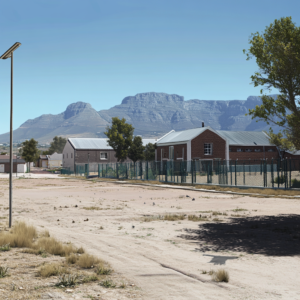South Africa’s Education System
South Africa’s education system is a complex tapestry woven with diverse influences, reflecting both its rich cultural heritage and the challenges of its historical past. At its core, the system comprises a range of publicly funded and private institutions that cater to various educational needs across the country. The Department of Basic Education (DBE) governs primary and secondary education, while the Department of Higher Education and Training (DHET) oversees tertiary institutions, further education and training (FET) colleges, and adult education.
Starting from Grade R (the reception year) and progressing to Grade 12, basic education is structured to provide comprehensive learning experiences. Despite efforts to improve educational accessibility, the system still grapples with disparities in quality and resources between urban and rural schools. These challenges have roots in the apartheid era, which left a legacy of inequality in educational access and quality.
In recent years, the South African government has made significant strides in increasing enrolment rates and improving literacy levels. Additionally, the integration of technology and modern teaching methodologies is slowly reshaping classrooms. Nevertheless, the system is ranked low in global education standings, highlighting an ongoing need for reform and investment.
Understanding South Africa’s education framework is crucial for recognizing both its achievements and the hurdles it faces in the pursuit of quality education for all. This dynamic system holds the potential for transformative growth, unlocking opportunities for future generations.
Historical Context and Evolution of Education in South Africa
Understanding the current state of South Africa’s education system requires looking back at its complex and often turbulent history. During the apartheid era, which lasted from 1948 until 1994, education was used as a tool for segregation and inequality. The system was designed to favour white students, with well-funded schools and quality resources, while students of colour faced overcrowded classrooms, underqualified teachers, and inadequate facilities under what was known as the Bantu Education Act of 1953.
This systemic disparity created a legacy of educational inequality that is still being addressed today. With the end of apartheid in 1994 and the advent of democracy, the new South African government recognized the critical need to transform and democratize the education system. Legislative changes were made, and policies were enacted to promote equal access to quality education for all children, irrespective of race or background.
Significant strides have been made since then. The government has invested heavily in infrastructure, training, and curriculum development. Programs aimed at improving literacy and numeracy have been introduced, and efforts to include technology in education have been ongoing.
However, the legacy of apartheid still presents challenges. Disparities in resource allocation, regional differences, and socio-economic factors continue to affect the quality of education available to many students.
Despite these challenges, the evolution of South Africa’s education system over the past few decades shows promising progress and underscores the nation’s commitment to providing equitable education opportunities for all its citizens.
Current Statistics and Global Comparisons
South Africa’s education system presents a complex picture, reflective of the country’s socio-economic landscape. According to recent statistics, South Africa invests significantly in education, allocating around 6% of its GDP, which is comparable to many developed nations. Despite this financial commitment, the country often lags in global education rankings.
The Quality Learning and Teaching Campaign highlights a literacy rate that hovers around 87%, yet the country struggles in key areas like mathematics and science. In international assessments, such as the Trends in International Mathematics and Science Study (TIMSS), South African students consistently score below the global average.
 When compared to other countries, the stark disparities within South Africa’s own borders become apparent. While urban schools in affluent areas demonstrate standards on par with Western countries, rural and township schools continue to face inadequate resources and infrastructure. This urban-rural divide significantly impacts student performance and future prospects.
When compared to other countries, the stark disparities within South Africa’s own borders become apparent. While urban schools in affluent areas demonstrate standards on par with Western countries, rural and township schools continue to face inadequate resources and infrastructure. This urban-rural divide significantly impacts student performance and future prospects.
On a brighter note, however, South Africa boasts a number of excellent universities, such as the University of Cape Town and the University of the Witwatersrand, both recognized globally for their research and academic standards. These institutions offer pathways to higher education excellence for those who overcome the challenges of the basic education system.
In conclusion, while South Africa is making strides in education investment, there are significant hurdles to overcome in achieving equitable quality across the country. Understanding these statistics provides insight into the urgent need for reform and targeted interventions within the education sector.
Success Stories and Notable Achievements in South Africa’s Education System
South Africa’s education system, despite its challenges, has witnessed several success stories that highlight its potential. One of the standout achievements is the significant improvement in literacy rates over the past decades. According to recent data, youth literacy is now estimated at over 95%, a remarkable rise that reflects the dedicated efforts of both government and non-governmental organizations in promoting education accessibility and quality.
Furthermore, South Africa has produced numerous individuals who have achieved international acclaim, thanks to their strong educational foundations. For instance, the country is home to several Nobel laureates, including J.M. Coetzee in literature and Nelson Mandela for peace, both of whom underscore the role of education in nurturing talent and leadership. Additionally, several South African universities, such as the University of Cape Town and the University of the Witwatersrand, consistently rank among the top institutions in Africa and are recognized globally for their research contributions, especially in fields like healthcare and engineering.
These achievements are not just limited to the tertiary level; primary and secondary schools in South Africa have also made strides. Programs focused on science, technology, engineering, and mathematics (STEM) have gained traction, helping students from diverse backgrounds engage with and excel in these critical areas.
Overall, while South Africa’s education system faces notable hurdles, its successes serve as a testament to the resilience and potential within the country. By continuing to build on these achievements, there’s a promising future for learners across the nation.
South Africa’s education system faces a range of challenges that impact the quality of learning and teaching. One of the most pressing issues is the disparity in resources between urban and rural schools, which often leaves students in less affluent areas at a disadvantage. Many of these schools struggle with insufficient infrastructure, such as inadequate classrooms and poor sanitation facilities, making it difficult to create a conducive learning environment.
Another significant challenge is the high teacher-to-student ratio, which means that individual students often do not receive the attention they need. This situation is exacerbated by a shortage of qualified teachers, particularly in subjects like mathematics and science, which are critical for the country’s technological and economic development. Additionally, the quality of teacher training also varies, leading to inconsistency in teaching standards.
The legacy of apartheid still lingers in the form of inequality, affecting the distribution of educational resources. This has a direct impact on educational outcomes, with students from underprivileged backgrounds less likely to succeed. Compounding these issues is the high drop-out rate, particularly at the secondary level. Many students leave school early due to socio-economic pressures or a lack of engagement with the curriculum, which some critics argue is outdated and not aligned with real-world skills.
Ultimately, for South Africa to overcome these educational challenges, there needs to be a concerted effort from the government, private sector, and community organizations. By addressing these issues, the nation can provide better educational opportunities and create a more equitable system that benefits all its citizens.
Future Prospects and Opportunities for Improvement
South Africa’s education system stands at a critical juncture where future prospects hold promise for transformative improvement. One key opportunity lies in the integration of digital technologies into the classroom. With increased access to internet connectivity and e-learning platforms, there’s potential to bridge educational gaps, especially in rural areas. This digital shift not only aids in delivering quality education but also equips students with essential skills for the 21st century.
Another promising area is the ongoing reforms in curriculum development. By aligning educational content with global standards and local needs, South Africa can prepare students more effectively for the global job market. Emphasizing STEM (Science, Technology, Engineering, and Mathematics) subjects can also foster innovative thinking and problem-solving skills among learners.
Teacher training is another critical area for improvement. Investing in professional development programs will enhance teaching quality, effectively impacting student outcomes. By adopting modern teaching methodologies and continuous professional growth, educators can better inspire and guide their students.
Furthermore, public-private partnerships present significant opportunities to enhance infrastructure and resource allocation within schools. Through collaboration with private entities, schools can access additional funding and expertise, which can lead to improved educational environments.
Lastly, community involvement remains crucial. By engaging parents and local stakeholders, schools can create supportive environments that foster student success. Encouraging a culture of lifelong learning can empower communities, driving sustainable improvements in education.
With these opportunities, South Africa’s education system can move towards a brighter future, ensuring that every student has access to quality education and the tools needed for success.

